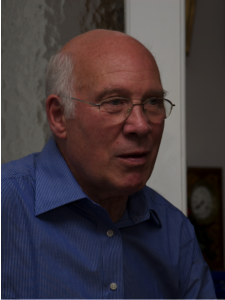 Helmut Knözinger passed away at his home in Munich on January 12, 2014, at age 78. The catalysis community loses an active member of many years, a contributor of outstanding science, leader in various organizations, editor of key publications, and partner in vibrant collaborations.
Helmut Knözinger passed away at his home in Munich on January 12, 2014, at age 78. The catalysis community loses an active member of many years, a contributor of outstanding science, leader in various organizations, editor of key publications, and partner in vibrant collaborations.
Knözinger studied Physics at Ludwig-Maximilians-Universität München, with Physical Chemistry becoming his area of emphasis during his time as a doctoral student. His dissertation (1961), which was supervised by Georg-Maria Schwab, was his entrance into the field of catalysis; he investigated the suitability of the catalytic decomposition of methyl formate as a test reaction. He continued on with the Habilitation (1967), the qualification for professorship within the German academic system (Doctor of Sciences in others). The topic of the associated thesis was the dehydration of ethanol on alumina, a material that would later be the subject of his perhaps most famous article. Knözinger held various academic positions at Ludwig-Maximilians-Universität München, with an interlude as a guest professor at the Universidad Central de Caracas, Venezuela (1968/69), before he arrived at his final rank of professor (1980). He remained true to his alma mater until his official retirement in 2000, after which he kept an office and continued to be active as a researcher and editor.
Knözinger researched in many different areas of catalysis and excelled at developing and applying spectroscopic methods for the characterization of catalysts. Each of the classes of materials in his focus can be associated with methods that he tailored for the purpose of their investigation. He made significant contributions to the characterization of acid-base properties of oxidic materials, analyzing the OH groups spectroscopically, and extensively using carbon monoxide (CO) as a probe but also exploring much sought-for probe molecules for basic surface properties. This work is documented in many original and review articles, including those on alumina in Catalysis Reviews-Science and Engineering in (with Ratnasamy, 1978), on CO adsorption in Materials Chemistry and Physics (with Zaki, 1987), on weakly interacting probes for zeolites in Journal of the Chemical Society — Faraday Transactions (with Huber, 1998), and on acid-base characterization in the Handbook of Heterogeneous Catalysis (2008). Relating to his work on CO as a probe molecule, he also applied his skill in infrared spectroscopy to supported carbonyl complexes, of which he wrote in Angewandte Chemie International Edition (with Lamb and Gates, 1988). Oxides supported on other oxides was another focus area, with applications of the catalysts for example in hydrodesulfurization and selective catalytic reduction. In addition to probe molecule adsorption and IR spectroscopy — his forte, he applied Raman, UV-vis, and photoelectron spectroscopy. To investigate the mechanism of dispersion of oxides on other oxides, experiments to observe the transport were designed, and in a long-lasting collaboration with the Institute for Plasma Physics in Garching (a Max-Planck Institute), thin film model catalysts were investigated by surface science techniques such as ion scattering and Auger electron spectroscopy. Examples of this work are the articles on molybdena supported on alumina in Journal of Physical Chemistry (with Jeziorowski, 1978) or on solid-solid wetting in Surface Science in (with Leyrer, Margraf, and Taglauer, 1988).
Knözinger’s work was recognized with national and international awards, among them the Ciapetta Lectureship (1980), the Ipatieff Lectureship (1988), the Max-Planck Research Award (1995), the Prix Gay Lussac Humboldt Prize (1997), and the Alwin Mittasch Medal of Dechema (1998). He became an honorary member of the Hungarian Academy of Sciences in (1995), a member of the Academia Europaea (2000), and an honorary professor of Nankai University, Tianjin, China (2004). He was a member of chemical and catalysis societies, and helped organize national and international conferences on catalysis. Notably, he was first a member of the European Association of Catalysis and then later the representative of the Federal Republic of Germany in the Council of the European Federation of Catalysis Societies (1993–1999). He also acted as president of the International Association of Catalysis Societies (1996–2000).
As editor, Knözinger moved into the footsteps of Schwab, who had edited a handbook of catalysis. Together with Ertl and Weitkamp, Knözinger published the first edition of the Handbook of Heterogeneous Catalysis with five volumes in 1997. Such was the success that a second edition, with Schüth as additional editor and eight volumes, appeared in 2008. He served as an editor of Advances in Catalysis, in the years 1998 through 2011; under his reign, three volumes were dedicated to spectroscopic analysis of the working catalyst.
While Knözinger remained rooted in Munich throughout his career, he cultivated collaborations and exchange. He himself was an avid traveler and also a guest professor multiple times, in Caracas, Xianmen, Evanston, Amsterdam, and Paris. Researchers from around the world visited his laboratory (their provenience was, in fact, tracked by pins in a wall map at the institute), mostly to perform IR spectroscopic experiments using his specially designed apparatus. Guests were treated with graciousness and enjoyed Bavarian hospitality.
His constant interest in everybody’s research was manifest in his daily afternoon rounds through the labs with individual conversations, his reception of a knock at his office door, his overnight reading of manuscripts handed to him. His reliability and his self-discipline were exemplary. His advising was never forceful, promoting academic freedom and independence. A significant number of students achieved the doctoral degree under his guidance and are testament to his skill as an advisor and mentor. Knözinger was a gifted athlete in his youth and a mountain enthusiast; he instigated regular group outings – hiking in summer and skiing in winter. He created an atmosphere of togetherness that let team spirit and humor flourish and friendships be forged.
Knözinger was also a talented photographer and adhered to this passion throughout his life – his camera accompanied him on most occasions. The various photographs displayed in his office spoke of his skill, of his travels around the world, and his eye as an observer.
Helmut Knözinger’s presence and his views will be missed.
Friederike Jentoft
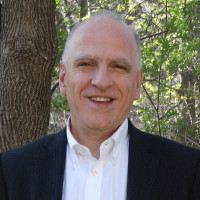 I am pleased to announce that Professor Matthew Neurock of the University of Minnesota is the recipient of the2015 Robert Burwell Lectureship in Catalysis of the North American Catalysis Society, sponsored by Johnson Matthey and administered by The North American Catalysis Society. It is awarded biennially in odd-numbered years. The award consists of a plaque and an honorarium of $5,000. The plaque will be presented during the closing banquet ceremonies at the 2015 North American Meeting of the Catalysis Society. An additional $4,500 is available to cover travelling expenses in North America.
I am pleased to announce that Professor Matthew Neurock of the University of Minnesota is the recipient of the2015 Robert Burwell Lectureship in Catalysis of the North American Catalysis Society, sponsored by Johnson Matthey and administered by The North American Catalysis Society. It is awarded biennially in odd-numbered years. The award consists of a plaque and an honorarium of $5,000. The plaque will be presented during the closing banquet ceremonies at the 2015 North American Meeting of the Catalysis Society. An additional $4,500 is available to cover travelling expenses in North America.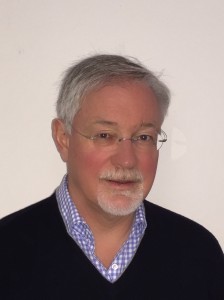 We are pleased to announce that Professor Hans Joachim Freund of the Fritz Haber Institute is the recipient of the 2015 Michel Boudart for the Advancement of Catalysis, sponsored by the Haldor Topsøe Company and administered jointly by the North American Catalysis Society and the European Federation of Catalysis Societies. The Award will be presented at the 24th North American Meeting of the Catalysis Society (Pittsburgh, June 2015) and at Europacat XII (Kazan, Russia, August 2015).
We are pleased to announce that Professor Hans Joachim Freund of the Fritz Haber Institute is the recipient of the 2015 Michel Boudart for the Advancement of Catalysis, sponsored by the Haldor Topsøe Company and administered jointly by the North American Catalysis Society and the European Federation of Catalysis Societies. The Award will be presented at the 24th North American Meeting of the Catalysis Society (Pittsburgh, June 2015) and at Europacat XII (Kazan, Russia, August 2015). We are pleased to announce that Professor Christophe COPÉRET of the Department of Chemistry and Applied Biosciences ETH Zürich is the recipient of the 2015 Paul H. Emmett Award in Fundamental Catalysis, sponsored by the Grace Catalyst Technologies operating segment of W.R. Grace
We are pleased to announce that Professor Christophe COPÉRET of the Department of Chemistry and Applied Biosciences ETH Zürich is the recipient of the 2015 Paul H. Emmett Award in Fundamental Catalysis, sponsored by the Grace Catalyst Technologies operating segment of W.R. Grace 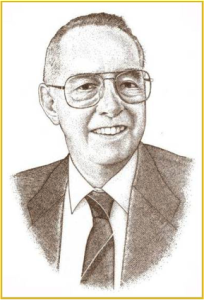 Dr. Theodore A. Koch, 88, a retired DuPont research scientist passed away peacefully at his home in Wilmington, Delaware on September 13, 2014.
Dr. Theodore A. Koch, 88, a retired DuPont research scientist passed away peacefully at his home in Wilmington, Delaware on September 13, 2014.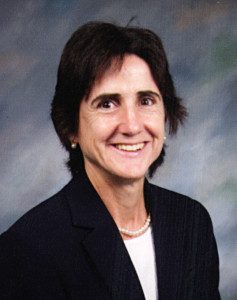 Anne Gaffney is the recipient of the 2015 Eugene J. Houdry Award of the North American Catalysis Society. The Eugene J. Houdry Award in Applied Catalysis is sponsored by Clariant. It is administered by The Catalysis Society and awarded biennially in odd-numbered years. This award recognizes and encourages individual contributions in the field of catalysis with emphasis on the development of new and improved catalysts and processes representing outstanding advances in their useful application. The award consists of a plaque and a prize of $5,000, which will be presented at the 24th North American Meeting of the Catalysis Society to be held in Pittsburgh, Pennsylvania on June 14–19, 2015. The Award Plenary lecture will also be presented during this meeting.
Anne Gaffney is the recipient of the 2015 Eugene J. Houdry Award of the North American Catalysis Society. The Eugene J. Houdry Award in Applied Catalysis is sponsored by Clariant. It is administered by The Catalysis Society and awarded biennially in odd-numbered years. This award recognizes and encourages individual contributions in the field of catalysis with emphasis on the development of new and improved catalysts and processes representing outstanding advances in their useful application. The award consists of a plaque and a prize of $5,000, which will be presented at the 24th North American Meeting of the Catalysis Society to be held in Pittsburgh, Pennsylvania on June 14–19, 2015. The Award Plenary lecture will also be presented during this meeting. Helmut Knözinger passed away at his home in Munich on January 12, 2014, at age 78. The catalysis community loses an active member of many years, a contributor of outstanding science, leader in various organizations, editor of key publications, and partner in vibrant collaborations.
Helmut Knözinger passed away at his home in Munich on January 12, 2014, at age 78. The catalysis community loses an active member of many years, a contributor of outstanding science, leader in various organizations, editor of key publications, and partner in vibrant collaborations.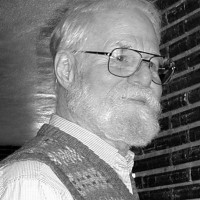 George Donald Blyholder was born January 10, 1931 in Elizabeth, New Jersey but he grew up in Kansas City, Kansas and Chicago, Illinois. He received his BA from Valparaiso U., his BS from Purdue U. in chemical engineering and a Ph.D. in chemistry from the University of Utah. His thesis was entitled “Kinetics of Graphite Oxidation” and a part of this was published with his advisor, the renowned kinetist Henry Erying. While a graduate student, he met and married Betty Sue Conrad. Following graduation, he did postdoctoral studies at the University of Minnesota and then at The Johns Hopkins University with Prof. Paul H. Emmett. His work with Emmett involved the use of C‑14 labeled ketene to study the Fischer-Tropsch reaction mechanism. In 1959, he moved to Fayetteville, Arkansas as a professor of chemistry at the University of Arkansas. There he was involved in pioneering research on the use of infrared spectroscopy to study catalysis. His publication “Molecular orbital view of chemisorbed carbon monoxide” in the Journal of Physical Chemistry in 1964 has become a classic publication with 719 citations and probably more where it is just referred to as the “Blyholder Model”. He retired in 1996, becoming an emeritus professor. He published more than 100 articles in scientific journals with most in the area of surface science. His death at age 82 was on Feburary 24, 2013.
George Donald Blyholder was born January 10, 1931 in Elizabeth, New Jersey but he grew up in Kansas City, Kansas and Chicago, Illinois. He received his BA from Valparaiso U., his BS from Purdue U. in chemical engineering and a Ph.D. in chemistry from the University of Utah. His thesis was entitled “Kinetics of Graphite Oxidation” and a part of this was published with his advisor, the renowned kinetist Henry Erying. While a graduate student, he met and married Betty Sue Conrad. Following graduation, he did postdoctoral studies at the University of Minnesota and then at The Johns Hopkins University with Prof. Paul H. Emmett. His work with Emmett involved the use of C‑14 labeled ketene to study the Fischer-Tropsch reaction mechanism. In 1959, he moved to Fayetteville, Arkansas as a professor of chemistry at the University of Arkansas. There he was involved in pioneering research on the use of infrared spectroscopy to study catalysis. His publication “Molecular orbital view of chemisorbed carbon monoxide” in the Journal of Physical Chemistry in 1964 has become a classic publication with 719 citations and probably more where it is just referred to as the “Blyholder Model”. He retired in 1996, becoming an emeritus professor. He published more than 100 articles in scientific journals with most in the area of surface science. His death at age 82 was on Feburary 24, 2013.